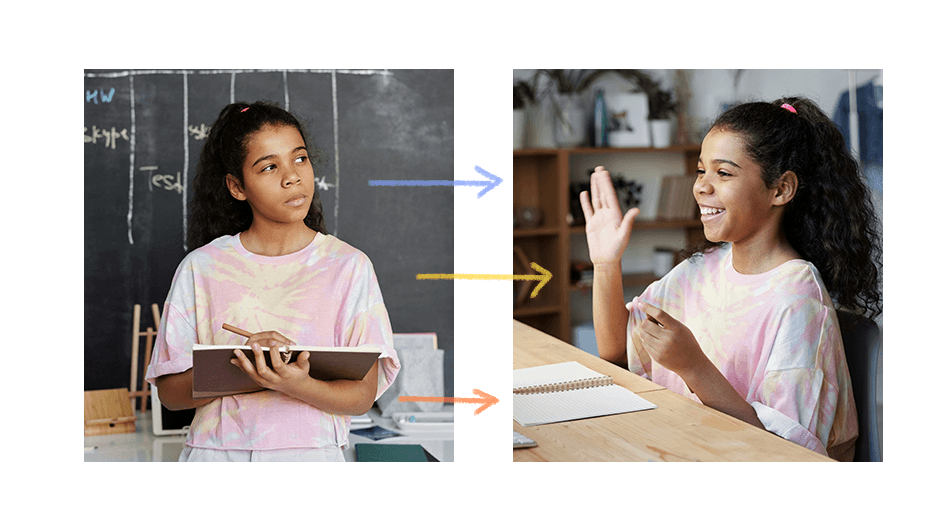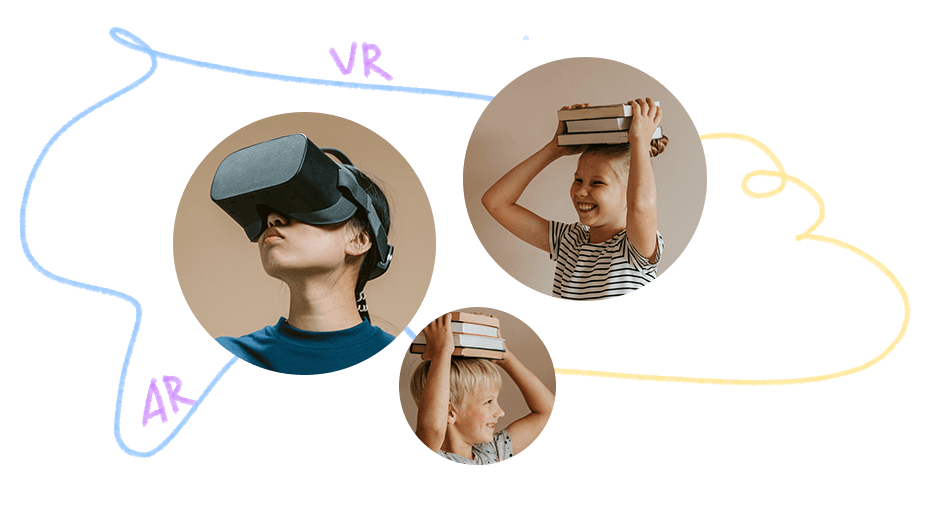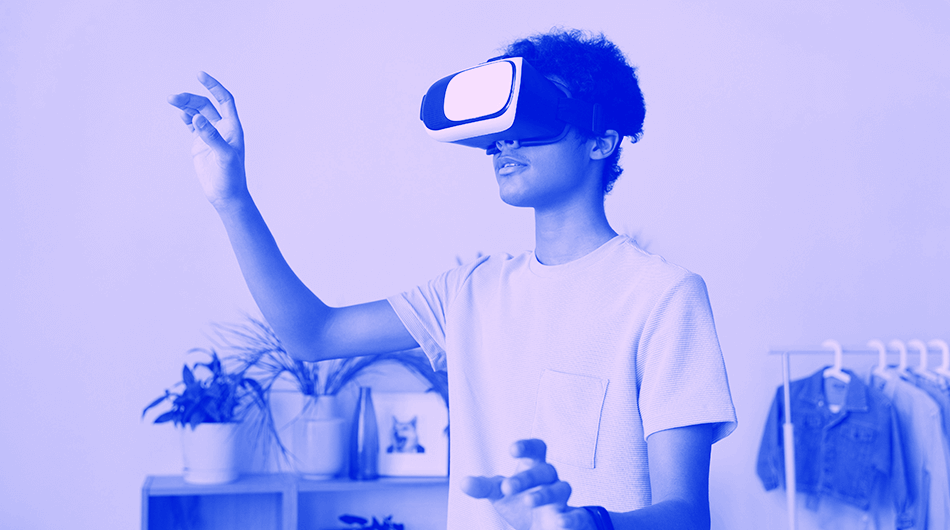In the years prior to 2020 online learning was one of the fastest-growing trends that was bringing new exciting concepts, possibilities, and ideas into the world of education. The new opportunities for distance learning, enrolling in virtual classes and even graduating from colleges and universities online were only the beginning of everything that this new form of remote learning had to offer.
While the great potential of virtual learning made many of us excited and curious about what the future of education will look like, there is no doubt that the change towards online learning was also intimidating and therefore it was happening gradually, and with caution.
When the chaos in 2020 created the biggest whirlpool of unimaginable challenges and emotions, online learning was brought under the spotlight as the only effective alternative to traditional studying that was bringing some sense of normality and stability into the lives of students and teachers worldwide.
What was online learning like back in 2020 and how is it different today, in 2024?
In the wake of the COVID-19 pandemic, online learning experienced an unprecedented surge in 2020 as educational institutions worldwide were forced to adapt to remote teaching and learning. There was no time for preparation or proper training for educators who faced the challenge of adapting their methods and curriculum to an online format in virtual classrooms.
Technologies, then and now
The growing number of platforms and virtual classrooms made it possible to switch from regular classrooms to live virtual classes for students of all ages and disciplines. The LMS platforms provided opportunities for synchronous and asynchronous learning. In terms of technologies, Virtual Reality and Augmented Reality were making their first steps in the world of education, unveiling an amazing potential for a more immersive learning experience. Gamification was becoming a fast-growing trend in online learning as one of the best ways of using technology for improving students’ engagement. There were a lot of challenges, mishaps and roadblocks in the process of transitioning to online learning. Still, there is no doubt that the virtual spaces provided the much-needed environment for studying and interaction that plays a significant part in the successful learning experience.
What were some of the challenges? The rapid switch to virtual classrooms created the challenges for the less tech-savvy educators and learners, especially for the youngest students. The lack of proper training in using the equipment and the available features made it difficult for a lot of tutors to adapt their content and teaching methods to the new environment.

Today, in 2024 the leap in technologies used in education is mind-blowing. The virtual classrooms and the LMS platforms are more optimized, secure and provide a richer selection of features and tools for collaborative work as well as for independent learning. The integration of VR and AR is a lot more widespread and creates the desired immersive learning experience in various disciplines and subjects. Gamification is here to stay as one of the most powerful tools for improving engagement and keeping the excitement for learning and exploring.
The last years brought two new players to the scene of remote studying that take the learning experience to new heights – Artificial Intelligence and Mobile learning. AI is the hottest trend in the virtual world, creating almost limitless possibilities for personalization in lessons, content, learning styles, resources, assessments, and much more. Combined with other new trends like using data analytics, AI makes it easier than ever to optimize the content and tailor it to suit perfectly the individual learner’s styles, challenges and goals.
Mobile learning is another amazing improvement in the technologies that makes education more accessible and flexible because learners can consume the content and participate in live sessions from their mobile devices.
Class management strategies
In 2020, the rapid transition to online classes happened through adapting classic teaching methods to the virtual classroom. However the lack of face-to-face communication and the increased distractions in the environments made it difficult to provide an efficient learning experience using the ‘old tools and strategies.’ As a result, online learning predominantly relied on synchronous lectures and asynchronous assignments, lacking the depth and interactivity of traditional classroom experiences.

Nowadays, teaching in the virtual classrooms looks different than the strategies used in the traditional classroom by implementing various instructional strategies that use the potential of the available features and tools, like various multimedia resources, VR and AR, educational applications, live streaming apps, etc. Such strategies include gamification, project-based learning, micro-learning, flipped classroom, and many more.
Personalization
Back in 2020 the main goal for the educational institutions was to provide the best alternative to classic education for students and teachers that will help them maintain a steady learning experience. The level of personalization was relatively low.

The introduction of AI as well as the focus on creating content especially for virtual classrooms opened endless possibilities for customization. Today, adaptive learning algorithms and data analytics tools are being employed to assess learners’ strengths, weaknesses, patterns and learning styles, enabling educators to tailor individual instructional content easier than before.
Accessibility
There are a lot of factors that contribute to successful online learning. The accessibility to digital devices, like computers and laptops, a stable and fast internet connection, access to equipment, such as headphones and webcams, and other factors, like the possibility of studying in a quiet environment… all this combined affected the smooth process of transitioning to online learning. And in many ways, 2020 showed how unprepared the world was for fast switching to virtual studying. The drive to make online learning more accessible has improved the accessibility to quality education for students of all backgrounds.

While online learning offered flexibility and accessibility in 2020, today, these aspects have been further optimized. Institutions have implemented hybrid learning models that combine online and in-person instruction, providing students with more flexibility to choose their preferred form of learning. Additionally, advancements in mobile technology have made online learning more accessible than ever before, allowing students to engage in learning activities anytime, anywhere connecting via mobile devices. High-speed internet access is more widespread, and online learning platforms have become more user-friendly and sophisticated.
Motivation and Engagement
Academic success often depends on students’ motivation and engagement in the studying process. While online learning offers plenty of advantages for learners, it also has various challenges for maintaining high motivation and engagement in the process. Some of the challenges include more distractions, more difficulties in maintaining discipline in the classroom and many more.
One of the latest trends for increasing students’ engagement is embracing micro-learning. Bite-sized content is proving to be one of the most effective strategies for presenting new content and concepts as well as for reinforcing knowledge.
The landscape of online learning has undergone a remarkable transformation since 2020, characterized by technological advancements, new teaching methods and strategies, enhanced flexibility and accessibility, and a focus on personalized learning experiences. Online learning is an ever-evolving field that will continue to shape the future of education in profound ways. While the challenges of the past have paved the way for progress and evolution in online learning, the future is more exciting than ever with the potential of AI and the endless thirst for knowledge and academic accomplishments.
